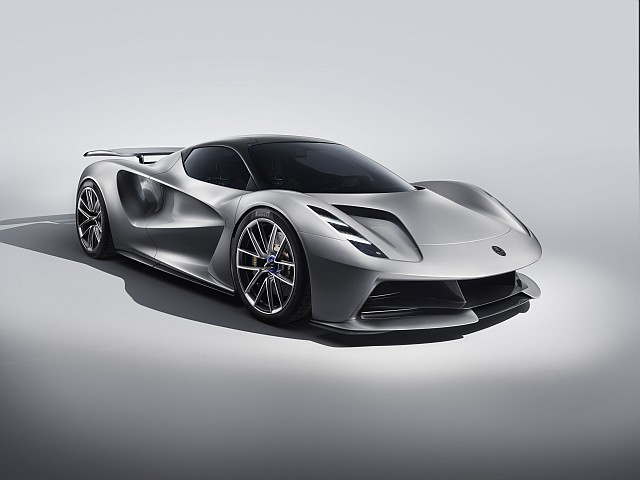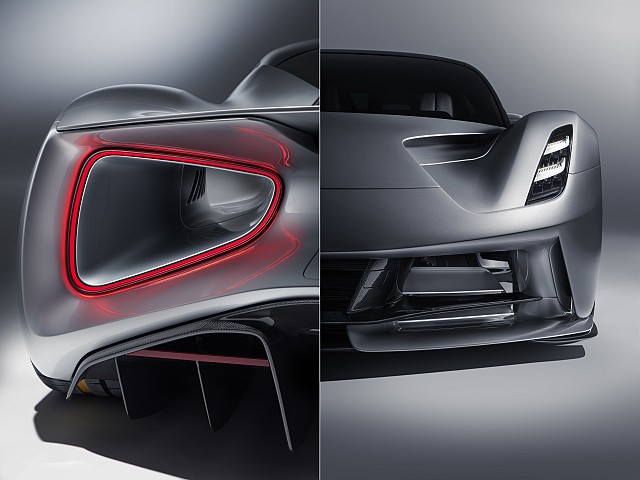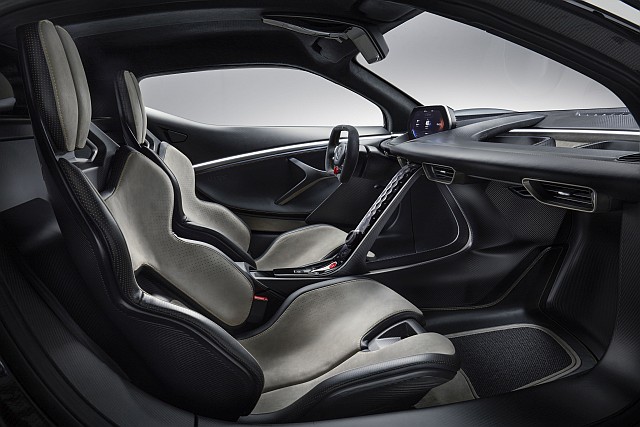With the Lotus Evija, the Hethel icons have unveiled their first all-electric hypercar and it claims to be the fastest production car they’ve ever built.

British marque Lotus are known for designing and building race and production cars that are lightweight and have good handling characteristics. The more famous Lotus cars – after the first was built in 1948 by Colin Chapman – since 1962 to present include the Esprit, Elan, Europa, Elise, Exige and the Evora, apart from the Lotus 25 that Jim Clark raced to Formula 1 World Championship victories in the 1960s. Now, Lotus have engineered an all-electric hypercar that boasts of stunning performance on the road and track. The Evija is said to produce 2,000 PS and a peak torque of 1,700 Nm.
The Lotus Evija is an exclusive car and production will be limited to not more than 130 units worldwide. Hethel, close to the historic city of Norwich in the East of England in the UK, has been the home of Lotus since 1966. The company has confirmed that production of the Evija will begin there during 2020. The stunning power output is delivered to the wheel with the help of the 70 kWh lithium-ion battery capable of “2,000 kW”, supplied with its management system by Williams Advanced Engineering (WAE) as part of a joint venture with Lotus to collaborate on advanced propulsion technologies.

There’s a reason that Lotus are calling the Evija the fastest production car built. It can do 0 to 100 km/h in less than three seconds and has a top speed of over 340 km/h. To add to that, the Evija takes just nine seconds to reach 300 km/h (less than three seconds from 100-200 km/h, and less than four seconds from 200-300 km/h). Driving modes on the Lotus Evija include Range, City, Tour, Sport and Track. The car’s advanced aerodynamics and four-radiator cooling package keep the battery at an optimum temperature. It means that the Evija is capable of being driven flat-out with no drop in performance for at least seven minutes in Track mode.
The Evija is the first Lotus road car to feature a one-piece carbon-fibre monocoque chassis. It is constructed from multiple carbon plies and the manufacturing process is similar to that of an F1 chassis that ensures the stiffest, safest and most technically-advanced chassis ever built. The total weight of the monocoque tub is just 129 kg. That, along with the battery pack engineered by Lotus and Williams, gives the car a light weight of just 1,680 kg – and a potential 1,190 PS/tonne! Active aerodynamics are deployed in the form of a rear spoiler, which elevates from its resting position flush to the upper bodywork, and an F1-style Drag Reduction System (DRS). Both are deployed automatically in Track mode, though can be deployed manually in other modes. The car is equipped with electronic stability control to ensure safety in all road conditions, with further traction provided by the four-wheel-drive system. A pure steering feel is assured via an electro-hydraulic system.

The Evija uses a 350 kW unit for charging; among the quickest available. The charging socket is hidden behind a vented flap at the rear end of the car. It takes 12 minutes to charge to 80 per cent and 18 minutes to full charge. The car’s range is 400 km (250 miles) on the WLTP Combined Cycle, or 434 km (270 miles) on the NEDC Combined Cycle. Lotus is in discussions with external suppliers on a charging solution for customers.
The car sits low and has a sleek and beautifully crafted design. Russell Carr, Design Director, Lotus cars commented: “The Evija is beyond anything Lotus has ever done… beyond anything I’ve ever done. We have created something beautiful, something new, dramatic and unique.”
The Evija is priced from £1.7m (Rs 14.6 crore approx) plus duties and taxes. Bookings are now open on the Lotus website.
Story: Azaman Chothia




















Leave a Reply